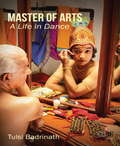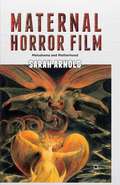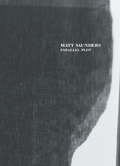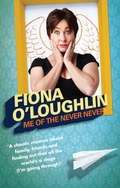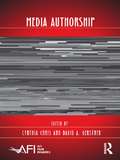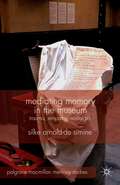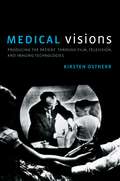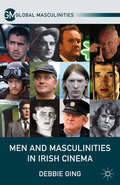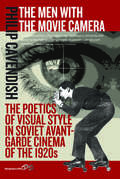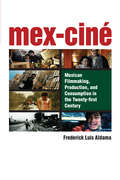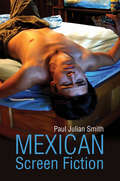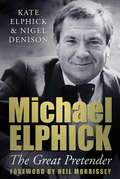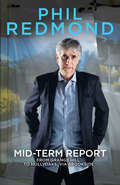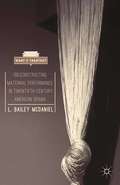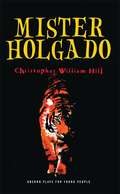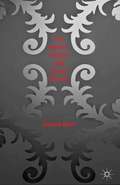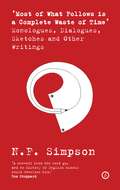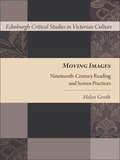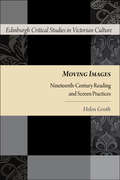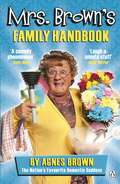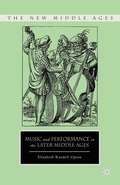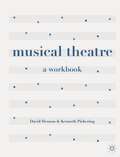- Table View
- List View
Master of Arts: A Life in Dance
by Tulsi BadrinathV.P. Dhananjayan was one of the first men to make a successful career as a Bharata Natyam dancer. In the late sixties, when he made this choice, Bharata Natyam – the classic dance form that Rukmini Devi helped evolve from the dance of the devadasis – was almost exclusively the domain of women. In making Bharata Natyam his profession, Dhananjayan had to create a space for his dance where none existed. It is only recently, in the relatively short span of the past seventy years, and to a great extent because of the creative efforts of versatile and innovative dancers like Dhananjayan, that greater number of men have performed Bharata Natyam as men, without needing to dress as women to appear on stage. As Dhananjayan’s student for nearly forty years now, and a trained dancer herself, the author, Tulsi Badrinath, chronicles the story of his brilliant life in dance with the insight of one who understands each nuance of it. Weaving her own life-long passion for Bharata Natyam with his remarkable story, she brings to light the difficulties faced by a male dancer in establishing himself in what was thought to be a somewhat unrespectable profession, and tells the compelling story of his life with empathy and understanding. Writing of his years in Kalakshetra and his departure from it; of the deep love that blossomed between him and his wife, Shanta, and the incredible dance partnership they forged, making them famous as The Dhananjayans; of his international collaborations with Ravi Shankar; and of his ability, as guru and teacher, to impart his passion for dance to his disciples, she explores her own understanding of what the dance, and her guru, have meant to her. Interspersing this remarkable tale of guru and shishya with the stories of other young male dancers in the realm of Bharata Natyam, she pays tribute to their extraordinary commitment, their talent and their courage.
Maternal Horror Film: Melodrama and Motherhood
by S. ArnoldMaternal Horror Film: Melodrama and Motherhood examines the function of the mother figure in horror film. Using psychoanalytic film theory as well as comparisons with the melodrama film, Arnold investigates the polarized images of monstrous and sacrificing mother.
Matt Saunders: Parallel Plot
by Matt SaundersBerlin-based artist Matt Saunders has in recent years captured the art world’s eye with a striking series of hybrid images and animated films produced using techniques from both photography and painting. Using movie stars such as German actress Hertha Thiele and British actor Patrick McGoohan as subjects, Saunders recasts historical film and television images into new discourses about portraiture, iconography, and spectatorship. Matt Saunders: Parallel Plot is both an artist’s book and a catalog that documents and reflects on a 2010 exhibition held at the Renaissance Society at the University of Chicago. Reproducing the stunning artwork from that show, the book also includes two conversations between Saunders and artist Josiah McElheny and an essay by experimental film scholar Bruce Jenkins that tackles the relationship among painting, photography, and film, as well as the dynamics of Saunders’s iconography. Offering insight into Saunders’s sophisticated working methods, this book is an evocative introduction to the work of this intriguing artist and the intertwined histories of film and photography.
Matt Saunders: Parallel Plot
by Matt SaundersBerlin-based artist Matt Saunders has in recent years captured the art world’s eye with a striking series of hybrid images and animated films produced using techniques from both photography and painting. Using movie stars such as German actress Hertha Thiele and British actor Patrick McGoohan as subjects, Saunders recasts historical film and television images into new discourses about portraiture, iconography, and spectatorship. Matt Saunders: Parallel Plot is both an artist’s book and a catalog that documents and reflects on a 2010 exhibition held at the Renaissance Society at the University of Chicago. Reproducing the stunning artwork from that show, the book also includes two conversations between Saunders and artist Josiah McElheny and an essay by experimental film scholar Bruce Jenkins that tackles the relationship among painting, photography, and film, as well as the dynamics of Saunders’s iconography. Offering insight into Saunders’s sophisticated working methods, this book is an evocative introduction to the work of this intriguing artist and the intertwined histories of film and photography.
Me of the Never Never: The chaotic life and times of Fiona O'Loughlin
by Fiona O'LoughlinNothing turns out as you plan, I guess; but I often think if I'd gone to a fortune teller when I was at school and been told I'd marry a guy who makes false teeth, move to Alice Springs, have five kids and become a standup comedian; well, I would have been surprised to say the least.'Fiona O’Loughlin is certainly the funniest (and possibly one of the busiest) working mothers in Australia today: a stand-up comedian based in Alice Springs and Adelaide, she is on the road for most of the year, doing live performances, plus regular television appearances. Fiona has also had successful shows at the Edinburgh and Adelaide fringe festivals, the Just for Laughs Festival in Montreal and the Melbourne International Comedy Festival.This book contains her stories – funny and sometimes sad – about her upbringing as part of a large Irish-Catholic family on a wheat farm in South Australia, her chaotic and disorganised family life ever since, living in Alice Springs and making it as a stand-up comedian. She also talks of a darker side of the life of many performers – alcohol.This book is for anyone who likes to laugh (and cry), who wants to read about a woman living her life on her terms.‘O‘Loughlin memoir is deep and honest, as she describes her love for her large family and her ordeal of struggling with alcohol addiction’– The NSW Writers Centre‘Her memoir is charm personified in that it’s not only a fascinating journey through an Australian woman’s life, its candour and honesty is kind of heart-melting’- Australian Women Online‘This is one which will raise a lot of laughs not least because she is one of those rare people who can see the funny side to everything life throws at her’ - Weekend Notes
Media Authorship (AFI Film Readers)
by Cynthia Chris David A. GerstnerContemporary media authorship is frequently collaborative, participatory, non-site specific, or quite simply goes unrecognized. In this volume, media and film scholars explore the theoretical debates around authorship, intention, and identity within the rapidly transforming and globalized culture industry of new media. Defining media broadly, across a range of creative artifacts and production cultures—from visual arts to videogames, from textiles to television—contributors consider authoring practices of artists, designers, do-it-yourselfers, media professionals, scholars, and others. Specifically, they ask: What constitutes "media" and "authorship" in a technologically converged, globally conglomerated, multiplatform environment for the production and distribution of content? What can we learn from cinematic and literary models of authorship—and critiques of those models—with regard to authorship not only in television and recorded music, but also interactive media such as videogames and the Internet? How do we conceive of authorship through practices in which users generate content collaboratively or via appropriation? What institutional prerogatives and legal debates around intellectual property rights, fair use, and copyright bear on concepts of authorship in "new media"? By addressing these issues, Media Authorship demonstrates that the concept of authorship as formulated in literary and film studies is reinvigorated, contested, remade—even, reauthored—by new practices in the digital media environment.
Media Authorship (AFI Film Readers)
by Cynthia Chris David A. GerstnerContemporary media authorship is frequently collaborative, participatory, non-site specific, or quite simply goes unrecognized. In this volume, media and film scholars explore the theoretical debates around authorship, intention, and identity within the rapidly transforming and globalized culture industry of new media. Defining media broadly, across a range of creative artifacts and production cultures—from visual arts to videogames, from textiles to television—contributors consider authoring practices of artists, designers, do-it-yourselfers, media professionals, scholars, and others. Specifically, they ask: What constitutes "media" and "authorship" in a technologically converged, globally conglomerated, multiplatform environment for the production and distribution of content? What can we learn from cinematic and literary models of authorship—and critiques of those models—with regard to authorship not only in television and recorded music, but also interactive media such as videogames and the Internet? How do we conceive of authorship through practices in which users generate content collaboratively or via appropriation? What institutional prerogatives and legal debates around intellectual property rights, fair use, and copyright bear on concepts of authorship in "new media"? By addressing these issues, Media Authorship demonstrates that the concept of authorship as formulated in literary and film studies is reinvigorated, contested, remade—even, reauthored—by new practices in the digital media environment.
Mediating Memory in the Museum: Trauma, Empathy, Nostalgia (Palgrave Macmillan Memory Studies)
by S. Arnold-de-Simine Silke Arnold-de SimineMediating Memory in the Museum is a contribution to an emerging field of research that is situated at the interface between memory studies and museum studies. It highlights the role of museums in the proliferation of the so-called memory boom as well as the influence of memory discourses on international trends in museum cultures.
Medical Visions: Producing the Patient Through Film, Television, and Imaging Technologies
by Kirsten OstherrHow do visual images shape the practice of medicine? What role does visual representation play in the cultivation of medical ways of seeing? And how has medicine's visual culture changed in the digital age? Kirsten Ostherr's ambitious study explores 120 years of medical image-making to explain how visual representations shape medical education and practice. Marshaling powerful, vivid examples she demonstrates how medical images created by the healthcare industry, documentary filmmakers, experimental artists, and the mass media acquire cultural meaning and influence doctors' and patients' understandings of health and disease. Her analysis proceeds chronologically, turning from the earliest experiments with medical filmmaking by the American College of Surgeons, to the place of health films in the "golden age" of instructional film in the 1960s. Ostherr considers the shift to television as the dominant medium of health education, highlighting the evolving status of realism, the techniques employed to bridge the entertainment-education divide, the role of expert consultants and sponsors, and the tradeoffs made by professionals to reach a broad audience. The rise of physician advice segments on newsmagazines forms a transition between medical dramas like Marcus Welby, MD and more recent reality shows like Boston Med and Doctor 90210. Concluding with a section on advertising and social media in the health care setting, the book ends with ten key lessons for the future of medical media.
Men and Masculinities in Irish Cinema (Global Masculinities)
by D. GingSpanning a broad trajectory, from the New Gaelic Man of post-independence Ireland to the slick urban gangsters of contemporary productions, this study traces a significant shift from idealistic images of Irish manhood to a much more diverse and gender-politically ambiguous range of male identities on the Irish screen.
The Men with the Movie Camera: The Poetics of Visual Style in Soviet Avant-Garde Cinema of the 1920s
by Philip CavendishUnlike previous studies of the Soviet avant-garde during the silent era, which have regarded the works of the period as manifestations of directorial vision, this study emphasizes the collaborative principle at the heart of avant-garde filmmaking units and draws attention to the crucial role of camera operators in creating the visual style of the films, especially on the poetics of composition and lighting. In the Soviet Union of the 1920s and early 1930s, owing to the fetishization of the camera as an embodiment of modern technology, the cameraman was an iconic figure whose creative contribution was encouraged and respected. Drawing upon the film literature of the period, Philip Cavendish describes the culture of the camera operator, charts developments in the art of camera operation, and studies the mechanics of key director-cameraman partnerships. He offers detailed analysis of Soviet avant-garde films and draws comparisons between the visual aesthetics of these works and the modernist experiments taking place in the other spheres of the visual arts.
Mex-Ciné: Mexican Filmmaking, Production, and Consumption in the Twenty-first Century
by Frederick L AldamaMex-Cinéoffers an accessibly written, multidisciplinary investigation of contemporary Mexican cinema that combines industrial, technical, and sociopolitical analysis with analyses of modes of reception through cognitive theory. Mex-Cinéaims to make visible the twenty-first century Mexican film industry, its blueprints, and the cognitive and emotive faculties involved in making and consuming its corpus. A sustained, free-flowing book-length meditation, Mex-Ciné enriches our understanding of the way contemporary Mexican directors use specific technical devices, structures, and characterizations in making films in ways that guide the perceptual, emotive, and cognitive faculties of their ideal audiences, while providing the historical contexts in which these films are made and consumed.
Mexican Screen Fiction: Between Cinema and Television
by Paul Julian SmithMexican cinema is booming today, a decade after the international successes of Amores perros and Y tu mamá también. Mexican films now display a wider range than any comparable country, from art films to popular genre movies, and boasting internationally renowned directors like Alfonso Cuarón, Alejandro González Iñárritu, and Guillermo del Toro. At the same time, television has broadened its output, moving beyond telenovelas to produce higher-value series and mini-series. Mexican TV now stakes a claim to being the most dynamic and pervasive national narrative. This new book by Paul Julian Smith is the first to examine the flourishing of audiovisual fiction in Mexico since 2000, considering cinema and TV together. It covers much material previously unexplored and engages with emerging themes, including violence, youth culture, and film festivals. The book includes reviews of ten films released between 2001 and 2012 by directors who are both established (Maryse Sistach, Carlos Reygadas) and new (Jorge Michel Grau, Michael Rowe, Paula Markovitch). There is also an appendix that includes interviews carried out by the author in 2012 with five audiovisual professionals: a feature director, a festival director, an exhibitor, a producer, and a TV screenwriter. Mexican Screen Fiction will be an invaluable resource for students and scholars and essential reading for anyone interested in one of the most vibrant audiovisual industries in the world today.
Mexican Screen Fiction: Between Cinema and Television
by Paul Julian SmithMexican cinema is booming today, a decade after the international successes of Amores perros and Y tu mamá también. Mexican films now display a wider range than any comparable country, from art films to popular genre movies, and boasting internationally renowned directors like Alfonso Cuarón, Alejandro González Iñárritu, and Guillermo del Toro. At the same time, television has broadened its output, moving beyond telenovelas to produce higher-value series and mini-series. Mexican TV now stakes a claim to being the most dynamic and pervasive national narrative. This new book by Paul Julian Smith is the first to examine the flourishing of audiovisual fiction in Mexico since 2000, considering cinema and TV together. It covers much material previously unexplored and engages with emerging themes, including violence, youth culture, and film festivals. The book includes reviews of ten films released between 2001 and 2012 by directors who are both established (Maryse Sistach, Carlos Reygadas) and new (Jorge Michel Grau, Michael Rowe, Paula Markovitch). There is also an appendix that includes interviews carried out by the author in 2012 with five audiovisual professionals: a feature director, a festival director, an exhibitor, a producer, and a TV screenwriter. Mexican Screen Fiction will be an invaluable resource for students and scholars and essential reading for anyone interested in one of the most vibrant audiovisual industries in the world today.
Michael Elphick: The Great Pretender
by Kate Elphick Nigel DenisonMichael Elphick was a young electrician working at the Chichester Theatre when he was discovered by Laurence Olivier, who arranged for him to join the Central School of Drama. It was here where he met Bruce Robinson, who would later cast him in one of the most popular British films of all time – Withnail and I. Elphick’s illustrious career also included major supporting roles in films such as Quadrophenia, The Elephant Man, Gorky Park and Dennis Potter’s Blue Remembered Hills. On television, there was Private Schultz and Boon, which gave his acolyte and friend, Neil Morrissey, his first starring role. One of his characters’ owned houses in Coronation Street whilst another wooed Peggy Mitchell in Eastenders. However, Elphick’s private life was every bit as varied as his acting career. Racked by alcoholism and devastated by the early death of his partner, Julia, Elphick died at the age of 55. And yet, his friends and family will always remember his hugely humorous personality, and everyone he met was left with a ‘Mike Elphick story’...
Mid-Term Report: From Grange Hill To Hollyoaks, Via Brookside
by Phil RedmondA masterclass in media studies from the creator of Grange Hill, Brookside and Hollyoaks. Described in Parliament as 'excellent' by Ed Vaizey, The Parliamentary Under-Secretary of State for Culture, Media and Sport GRANGE HILLSwimming pool disasters. Drugs, and just say ‘no’. Flying sausages. School like you’d never seen it before.BROOKSIDELesbian kisses. Bodies under patios. Exploding shops. Suburban life like you’d never seen it before.HOLLYOAKSBad boys on bikes. Loveable geeks. Leggy blondes. Students like you’d never seen them before.PHIL REDMONDThree classic TV programmes. One TV genius. This is the behind-the-scenes story of how a working-class lad from the Liverpool suburbs went from living on a housing estate to buying one, and from comprehensive school dinners to lunch with the Queen. Along the way he learned a lot of lessons, broke all the rules, and changed television for ever.
**Missing** (What is Theatre?)
by L. Bailey McDanielLooking at a century of American theatre, McDaniel investigates how race-based notions of maternal performance become sites of resistance to cultural and political hierarchies. This book considers how the construction of mothering as universally women's work obscures additional, equally constructed subdivisions based in race and class.
Mister Holgado (Oberon Plays for Young People)
by Christopher William HillWhen little Conrad Van der Bosch claims he has an invisible tiger called Sigmund hiding on his wardrobe, his child-psychologist father sees the ‘lie’ as a deliberate act of juvenile defiance. Doctor Van der Bosch is concerned that the boy is mentally maladjusted and in an attempt to terrify Conrad into admitting that there never was an invisible tiger, creates the terrifying figure of Mister Holgado, a child-eating monster who is apparently hiding inside Conrad’s wardrobe, waiting to consume the little boy. This triggers a battle for supremacy, as Conrad and his father struggle to manipulate the myth of Holgado. In desperation, as the Doctor fails to curtail his son’s imagination, he realises he has no choice but to become the child-eating Holgado.
The Modern Vampire and Human Identity
by Deborah MutchVampires are back - and this time they want to be us, not drain us. This collection considers the recent phenomena of Twilight and True Blood, as well as authors such as Kim Newman and Matt Haig, films such as The Breed and Interview with the Vampire, and television programmes such as Being Human and Buffy the Vampire Slayer.
‘Most of What Follows is a Complete Waste of Time’ Monologues, Dialogues, Sketches and Other Writings: Monologues, Dialogues, Sketches and Other Writings
by N. F. Simpson Ian Greaves David Crosher‘a one-off from the word go, and no history of English humour could overlook him.’ Tom StoppardN.F. Simpson (1919-2011) was a leading exponent of the Theatre of the Absurd, with the Royal Court classics A Resounding Tinkle (1957) and One Way Pendulum (1959) sealing his reputation as a comic master with a subtle philosophical undertow.Emerging during a revolutionary period in British theatre, Simpson rose to prominence alongside Harold Pinter, John Osborne and Arnold Wesker. His work has been embraced and performed by comedy legends including Spike Milligan, Eric Sykes, Beryl Reid and Dick Emery. His influence spread widely, from Peter Cook’s much loved character E.L. Wisty to Monty Python’s Flying Circus, and helped spawn a generation of outstanding comic talent.This authorised collection presents the best of Simpson’s short works for audiences new and old. Featuring more than sixty pieces from across six decades, the full spectrum of an extraordinary career is brought together in one volume for the first time: monologues, sketches, criticism and poetry, written for radio, television, stage and print. It includes all of Simpson’s anarchic collaborations with Willie Rushton for Private Eye, a generous selection of previously unseen pieces from his final manuscript, as well as a critical introduction by Simpson collaborator Simon Usher.
Moving Images: Nineteenth-Century Reading and Screen Practices (Edinburgh Critical Studies in Victorian Culture (PDF))
by Helen Groth"Examines the moving image in relation to nineteenth-century literature, theories of mind, and visual media This book examines how the productive interplay between nineteenth-century literary and visual media paralleled the emergence of a modern psychological understanding of the ways in which reading, viewing and dreaming generate moving images in the mind. Reading between these parallel histories of mind and media reveals a dynamic conceptual, aesthetic and technological engagement with the moving image that, in turn, produces a new understanding of the production and circulation of the work of key nineteenth-century writers, such as Lord Byron, Walter Scott, Lewis Carroll, Charles Dickens and William Makepeace Thackeray. As Helen Groth shows, this engagement is both typical of the nineteenth-century in its preoccupation with questions of automatism and volition (unconscious and conscious thought), spirit and materiality, art and machine, but also definitively modern in its secular articulation of the instructive and entertaining applications of making images move both inside and outside the mind."
Moving Images: Nineteenth-Century Reading and Screen Practices (Edinburgh Critical Studies in Victorian Culture (PDF))
by Helen GrothThis book examines how the interplay between nineteenth-century literary and visual media paralleled the emergence of a modern psychological understanding of the ways in which reading, viewing and dreaming generate moving images in the mind.
Mrs Brown's Family Handbook
by Brendan O'CarrollThe first and only official Mrs Brown's Boys book, Mrs Brown's Family Handbook uniquely takes us into the wonderful world of Britain's favourite potty-mouthed mother and housewife.Packed with tips for running the perfect home - why every mammy's secret weapon is a tea towel; how to clean up Granddad - as well as contributions from members of the extended family - Dermot's Guide to Farting; Winnie's Joy of Seks - Mrs Brown dispenses advice in her own inimical fecking style.The perfect gift for the house proud and the slovenly, Mrs Brown's Family Handbook should offend all who receive it.
Music and Performance in the Later Middle Ages (The New Middle Ages)
by E. UptonThis book seeks to understand the music of the later Middle Ages in a fuller perspective, moving beyond the traditional focus on the creative work of composers in isolation to consider the participation of performers and listeners in music-making.
Musical Theatre: A Workbook
by Kenneth Pickering David HensonDrawing on the history and development of Musical Theatre, this engaging workbook provides a comprehensive overview of the nuts and bolts of the discipline. Introducing students to the basics of the theory and history of musical theatre, it covers all four elements of any Musical Theatre course: dance, music, acting and performing. Acting as a guide through the entire process of preparing material for performance, this essential companion presents a number of stimulating exercises, questions, activities and topics for discussion to aid personal and professional development. This clear, comprehensive workbook is an ideal core text for Musical Theatre students of all levels. Packed with help, ideas and guidance for teaching, it will also appeal to directors and instructors.
